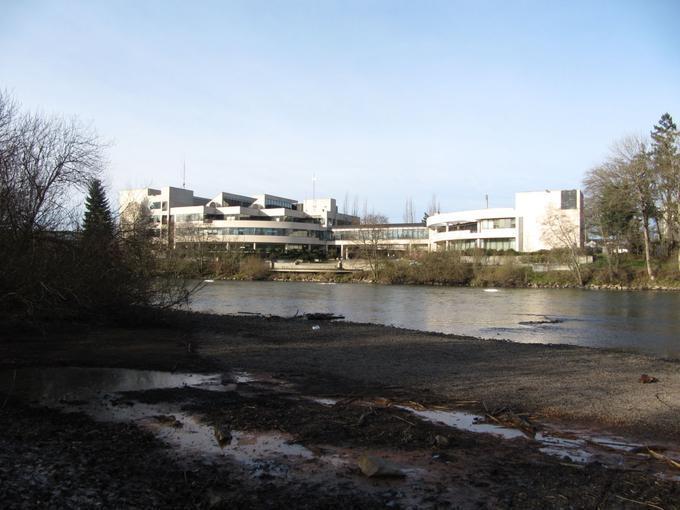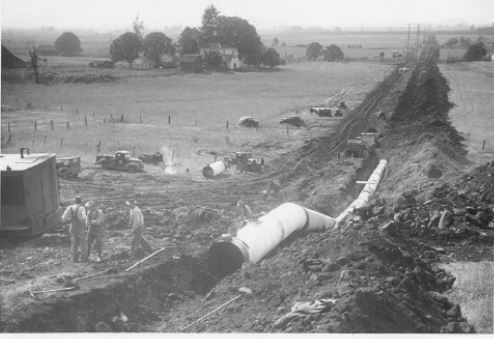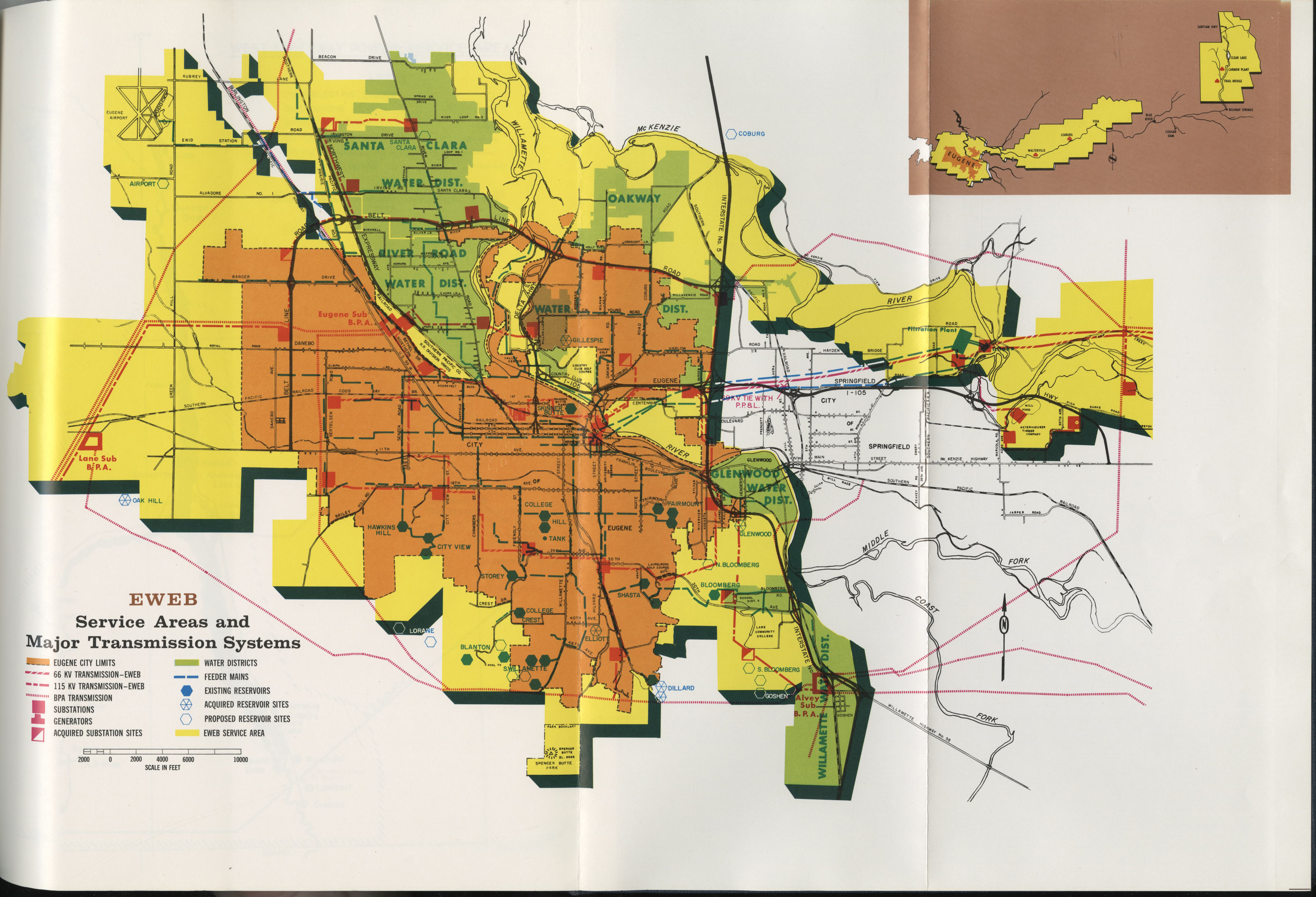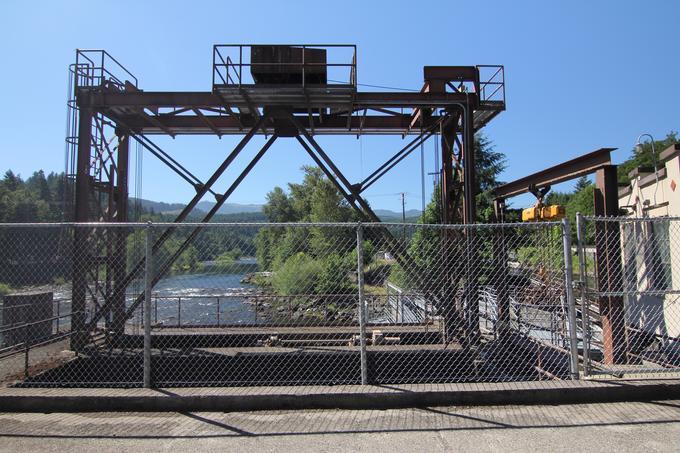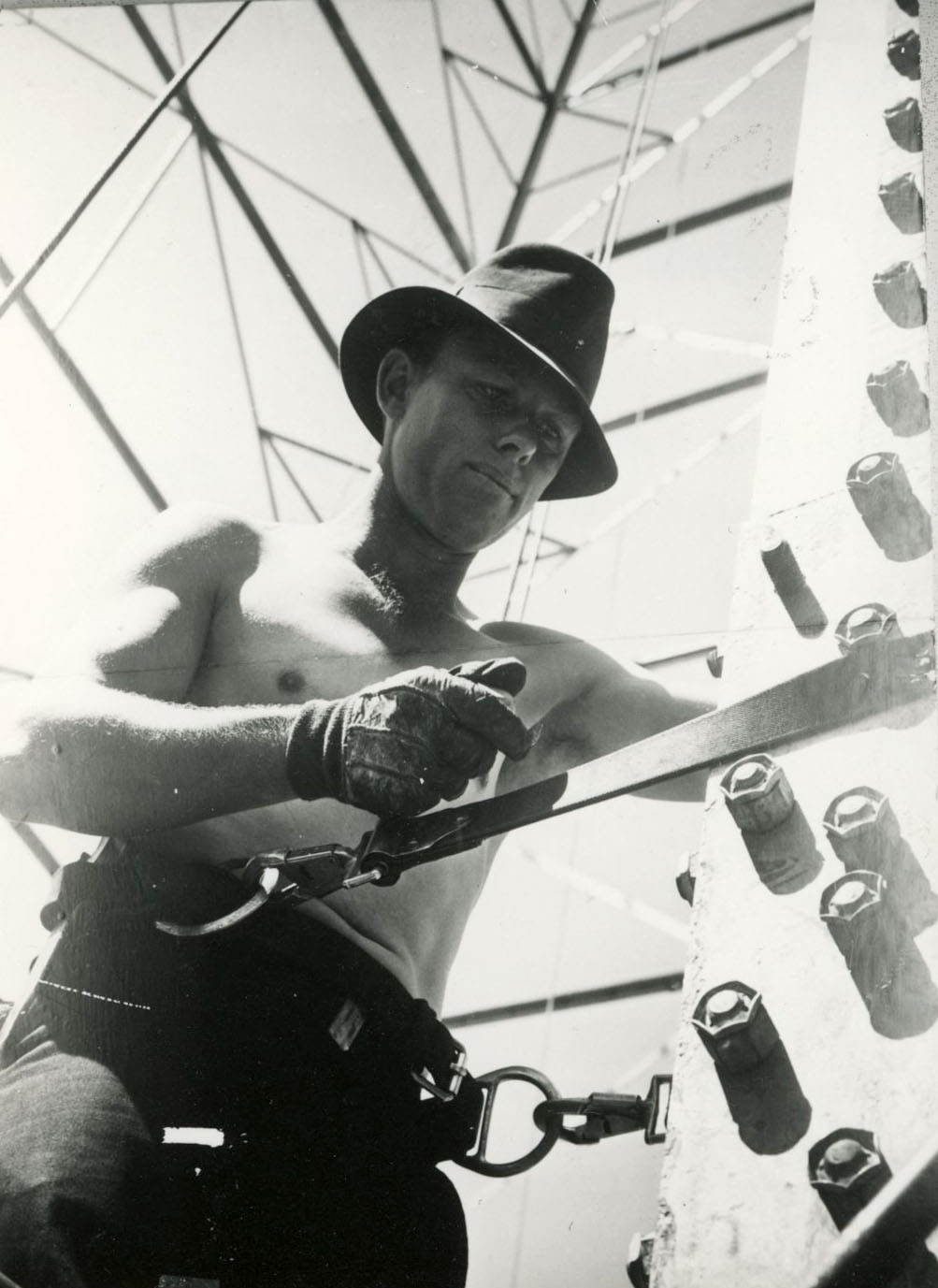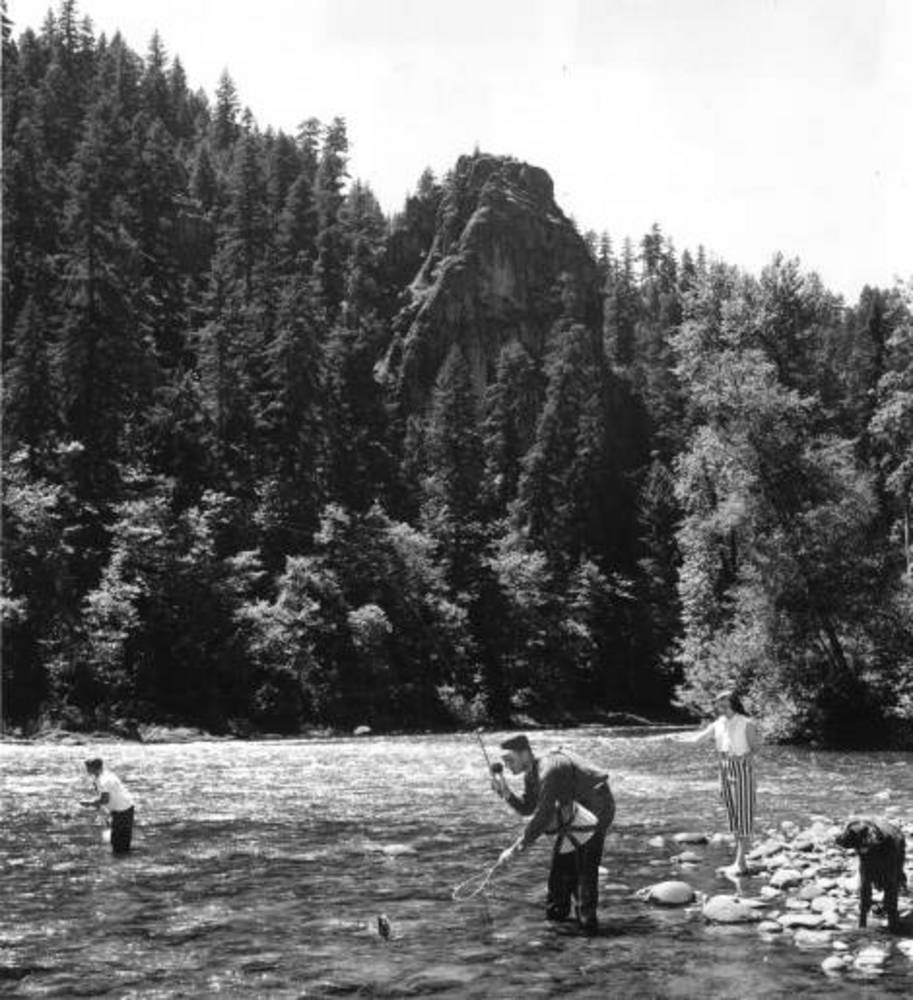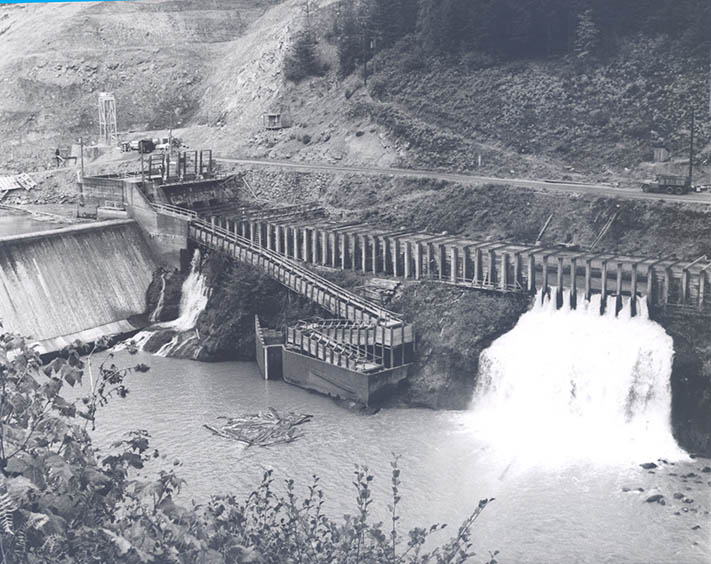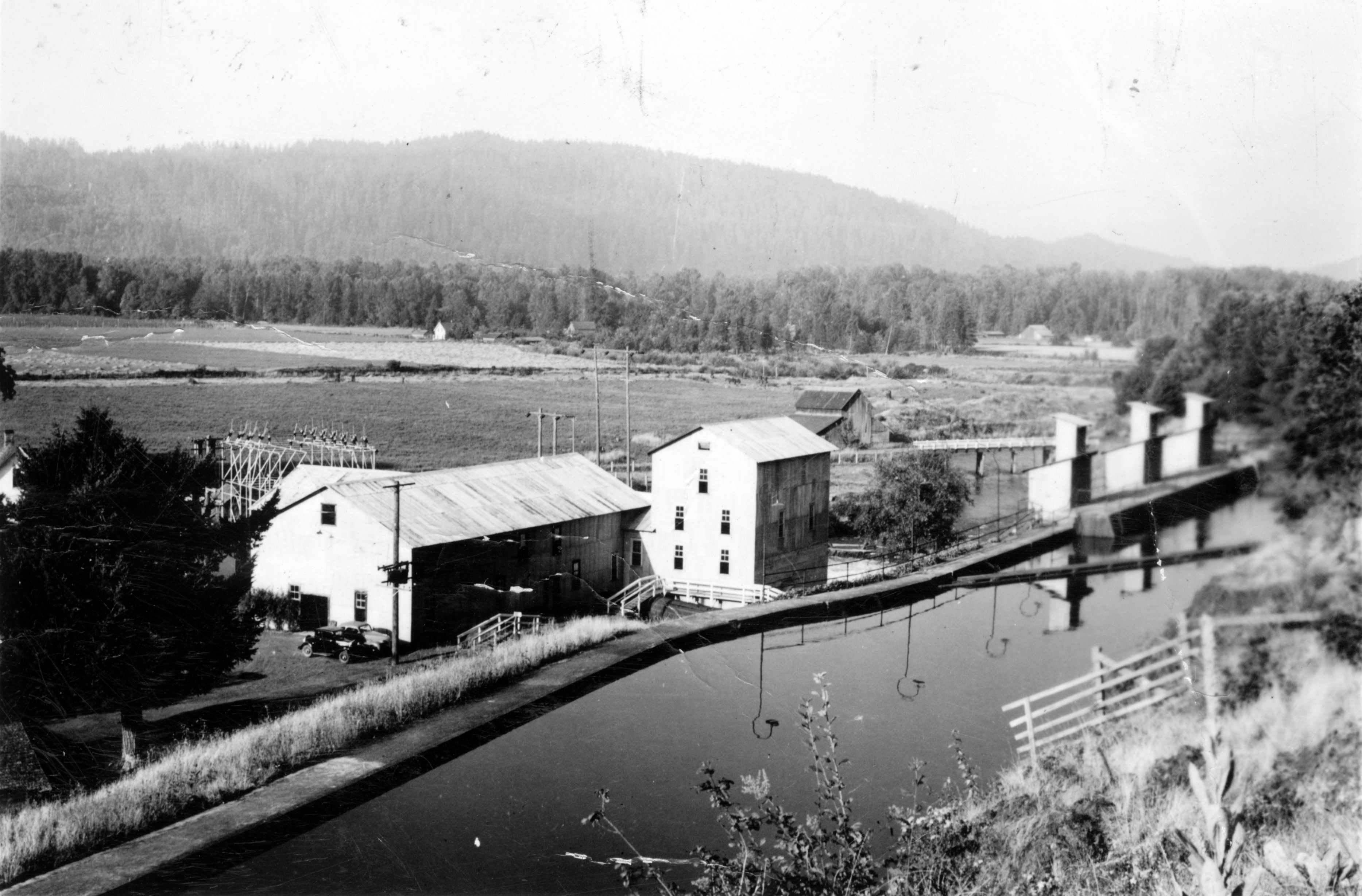In the aftermath of a 1906 outbreak of typhoid fever in Eugene, which was traced to poor operating conditions at the privately owned water utility, the city sought to ensure its residents clean, reliable drinking water. In 1908, Eugene voters passed a $300,000 bond measure that allowed the city to purchase the utility and invest in it. The city also purchased an electric utility, which generated power for the water pumps. The Eugene Water Board was established in March 1911 as an independently elected body to oversee the new municipal utility operation.
To provide a stable power supply, voters passed another bond measure in 1910 to fund the development of a hydroelectric plant at Walterville, sixteen miles east of downtown Eugene. The Walterville Powerhouse, fed by a four-mile-long canal, had two 1,200-horsepower units to generate power. The power generated was beyond what the Water Board needed and so was marketed to area residents and businesses for lighting, heat, and industry.
Eugene’s demand for both water and power grew quickly throughout the 1910s as the city's population grew and people installed electric stoves, furnaces, and lighting and adopted new so-called labor-saving devices and appliances, such as vacuums, electric toasters, and irons.
In April 1925, voters authorized bonds to construct the McKenzie River Water Supply Project, a new water source near Hayden Bridge, completed in 1927. The board also built water reservoirs at Fairmount Heights and Skinner’s Butte. In June 1927, voters passed the first of two funding requests to build the Leaburg Dam and Powerhouse on the McKenzie River, about twenty miles from Eugene. The $1.25 million bond, the largest ever put before Eugene voters at the time, passed by a four-to-one margin.
The first of Leaburg’s units began producing power in January 1930, and a second unit went online in 1950; together, they generated 15.9 megawatts. A standby steam plant, built at the Water Board’s downtown yard on the Willamette River, provided additional power when needed. With the creation of the Bonneville Power Administration in 1937, the nonprofit board in Eugene had a potentially huge source of secure federal power under long-term contract, although it would be several years until the contract was signed and a transmission line built so that federal hydropower from the Columbia River could be transmitted to Eugene. In 1949, in recognition of its increased role as the primary power utility in the city, the Water Board asked voters to approve a name change to the Eugene Water & Electric Board.
In 1950, EWEB built the Hayden Bridge Filtration Plant, a state-of-the art facility that still processes the city’s drinking water. After World War II, EWEB looked for additional generation sites even farther up the McKenzie River. An effort to develop the Beaver Marsh area ended in 1956 when voters defeated a funding request, partly because of concerns about the potential environmental impact to fishing and recreation.
EWEB regrouped and developed a modified design, the Carmen Smith Hydroelectric Project, which is widely recognized as an environmentally sensitive project serving multiple uses, including fishing and recreation. Known as Carmen-Smith, the project was dedicated in September 1963.
The Eugene Water & Electric Board continues to operate the Leaburg-Walterville and Carmen-Smith projects under license from the Federal Energy Regulatory Commission. EWEB has continued to purchase power from the Bonneville Power Administration and invested in power projects in partnership with other utilities, including Stone Creek, a small plant on the Clackamas River, the Foote Creek and Harvest wind projects, and co-generation projects to supply its Eugene service area. It remains the largest municipal utility in Oregon, with over five hundred employees in 2015 and serving nearly ninety thousand electrical and fifty thousand water customers.
-
![]()
EWEB headquarters, Eugene, 2010.
Courtesy University of Oregon Libraries, pna_20201
-
![]()
The powerhouse at at night, 1963.
Courtesy Eugene Water & Electric Board Archives -
Hayden Bridge Filtration Plant, c.1950.
Courtesy Eugene Water & Electric Board Archives
-
Water pipeline construction, 1926.
Courtesy Eugene Water & Electric Board Archives
-
![]()
EWEB service area map, 1977.
Courtesy Oregon Hist. Soc. Research Lib.
-
![]()
Leaburg hydroelectric project historic district (built in 1930).
Courtesy University of Oregon Libraries, SHPO, photo by G. Kramer
-
![]()
Leaburg hydroelectric project, built in 1930.
Courtesy University of Oregon Libraries, SHPO
Related Entries
-
![Bonneville Power Administration]()
Bonneville Power Administration
In 1937, the impending completion of Bonneville Dam (1938) and progress…
-
![Eugene]()
Eugene
Eugene is a metropolitan center at the head of the Willamette Valley, a…
-
![McKenzie River]()
McKenzie River
The McKenzie River, on the western slope of the Cascade Range, starts o…
-
![Portland Railway Light and Power]()
Portland Railway Light and Power
Portland Railway Light & Power (PRLP) was created in 1906 through the c…
-
![Walterville Canal & Powerhouse]()
Walterville Canal & Powerhouse
The Walterville Canal and Powerhouse is owned and operated by the Eugen…
Map This on the Oregon History WayFinder
The Oregon History Wayfinder is an interactive map that identifies significant places, people, and events in Oregon history.
Further Reading
Stone, Norman F. Bountiful McKenzie: The Story of the Eugene Water & Electric Board. Eugene, Ore.: Parkstone Company, 1986.

